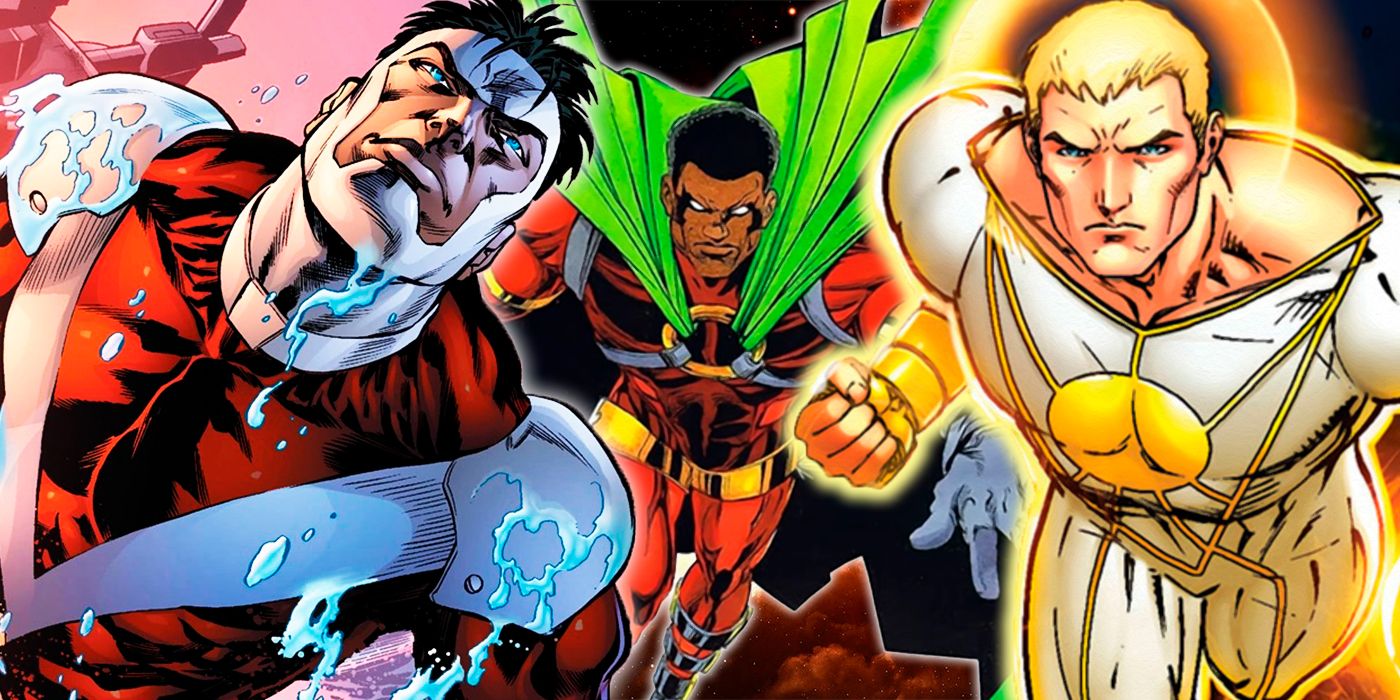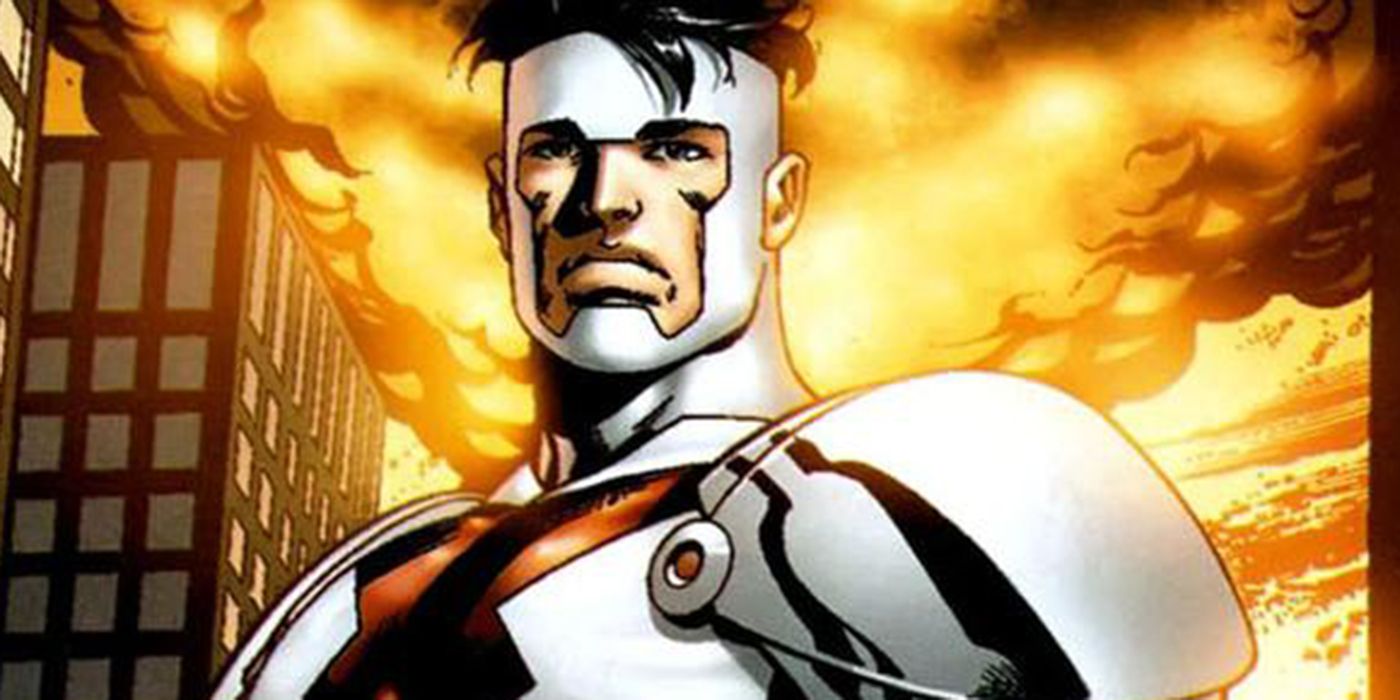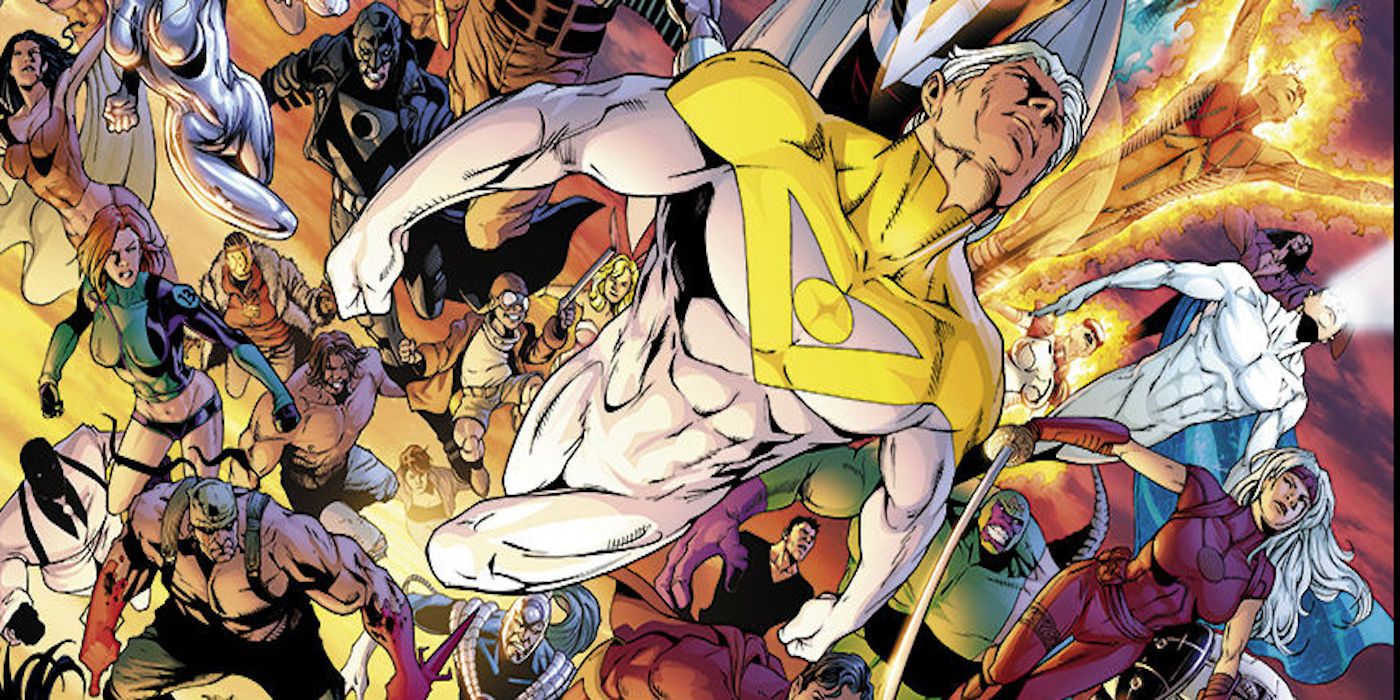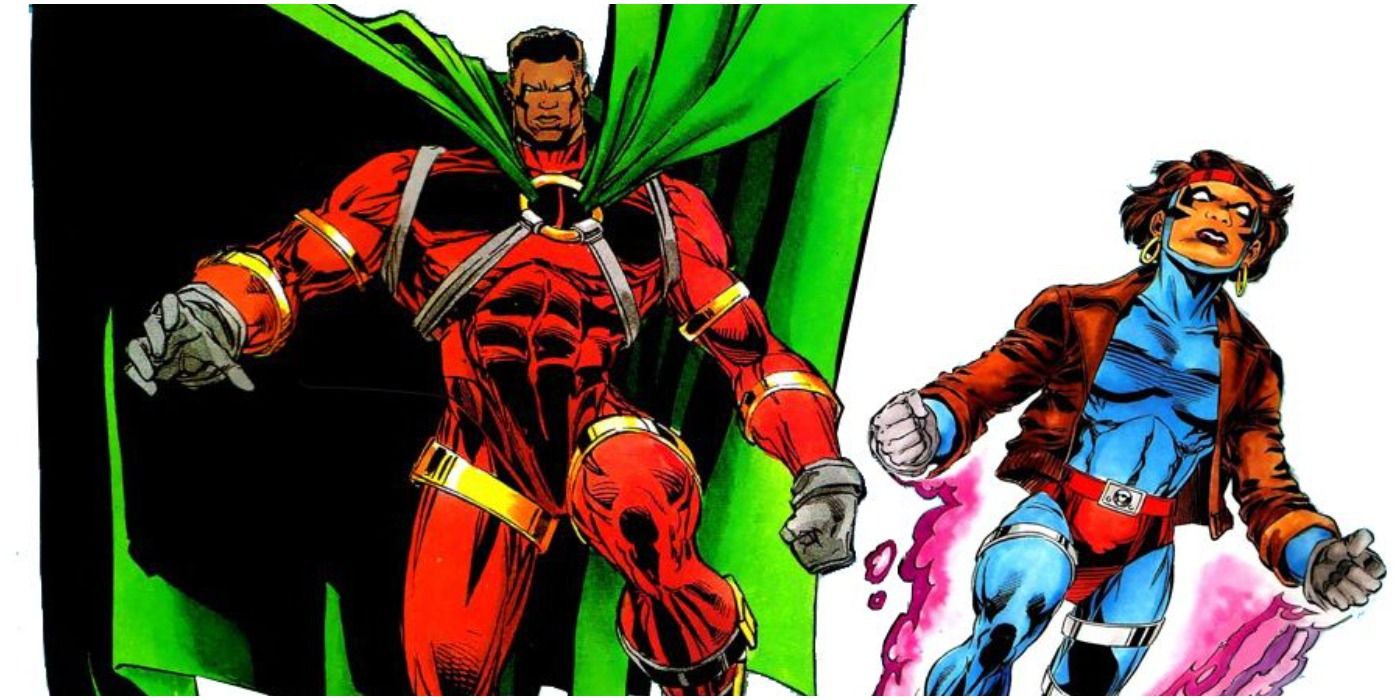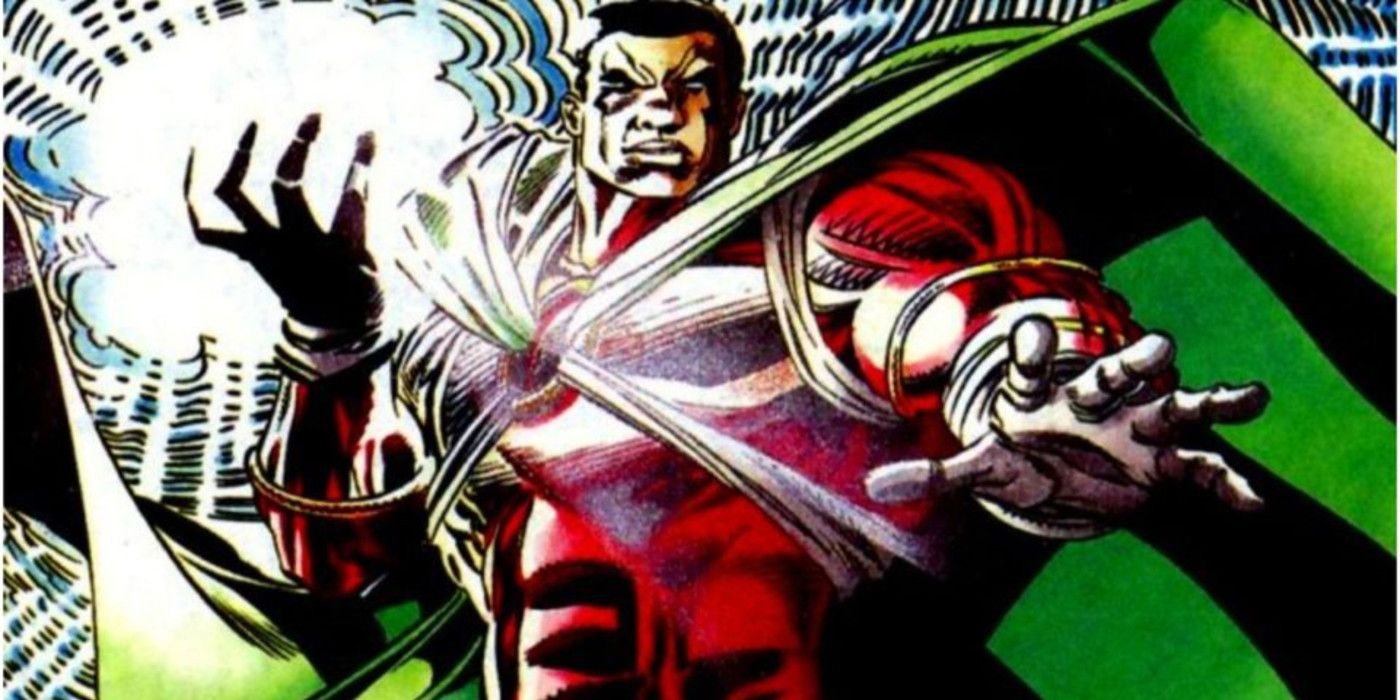Superman, as the premiere superhero in the genre, has had many ripoffs and wannabes throughout the years. Perhaps no era in comic books showcased this more than the 1990s. Despite the grim and gritty nature of the decade, the many nascent comic book publishers of that time saw fit to introduce their version of the otherwise sunny Man of Steel.
Image Comics, its initial Wildstom imprint as well as the DC-published Milestone books all had their own "Superman" stand-in. Though this may have reeked of laziness on the creators' parts, it actually allowed for the Superman archetype to be examined and developed in ways that DC Comics never would. Here's a look at these Men of Steel, as well as which one inverted the Superman mythos the best.
Mr. Majestic Was the Original Injustice Superman
Created by H. K. Proger and Wildstorm founder Jim Lee, Mr. Majestic was very obviously based off of Superman. With his bulging muscle, red costume and thick black hair, the resemblance to DC's hero was uncanny and intentional. Lee had stated that he was tired of seeing heroes with immense power that were than afraid to use it. This is why Majestic revels in using his vast abilities as a Kheran warlord against anyone who might stand in his way.
Refusing to give crooks a fair trial and seeing other heroes as weak, Majestic was a far more abrasive and less forgiving character than Superman. In fact, he could be seen somewhat as a predecessor to the version of Superman in the world of Injustice. During an interdimensional adventure, Superman and Mr. Majestic would actually meet each other, and their takes on heroism couldn't be more different.
Apollo Was a Much Different Take on the World's Finest Team
Apollo was created by Warren Ellis and Bryan Hitch, and he was another Superman stand-in for Wildstorm Publications. He didn't resemble Superman as much as Majestic did, but his relationship with Midnighter made his role fairly obvious. Fittingly drawing his powers from the sun like Superman does, Apollo was also in a passionate relationship with the aforementioned Midnighter, who was based off of Batman. This turned the oldest friendship in superhero comic books into one of comics' highest profile gay relationships.
Outside of his powers and being with "Batman," there's not much about Apollo that really embodies Superman. Neither his characterization or his morality really matched the Man of Tomorrow. Thus, his biggest connection to Superman was as a sort of shock value version of his archetype, both in his sexuality and his methods.
Milestone's Icon Was Much More Than Just a Black Superman
Icon was a character from the comic books of Milestone Media, who are most known for their character Static. Whereas Static was Spider-Man mixed with Black Lightning and Hardware was a cynical take on Iron Man and Steel, Icon was the obvious Superman of the Milestone Universe. An alien who had taken a "human" form when he landed during slavery, Icon's alter ego would grow into a black Conservative at odds with his community. Convinced to become a superhero by a young girl named Raquel, Icon would become a stern but protective force in the city of Dakota.
Icon twists and turns the Superman concept in more ways than simply his being black, tackling concepts of moral responsibility, identity and how far power should be used. This was accentuated by the urban setting, making Icon's impact on Dakota more tangible than Superman's in Metropolis.
Icon Succeeded Where Wildstorm's Superman Failed
As mentioned, Icon tackled all manner of themes and topics that might not have ever been mentioned in normal Superman comics. This made him a cut above other Superman wannabes that either copied merely the surface level aspects of Superman or instead just aped him entirely. For instance, Rob Liefeld's Supreme character was initially "Superman" in name only, acting basically like any other grit-toothed Liefeld creation. Even when Alan Moore would come in and redeem the character, he did so by simply copying Superman's Silver Age stories.
Apollo and Mr. Majestic never really tackled many themes themselves, and simply coasted on the shock value of the '90s. These two also lacked ongoing books of their own, whereas Icon was one of the first four Milestone books. Said book, along with most Milestone titles, was leagues beyond what rivals such as Image were putting out, relying much more on poignant, topical storytelling than gimmicks, multiple covers, gritted teeth or pouches. Icon may not have been a 1:1 recreation of Superman, but the way that he took the same basic concepts and did something completely new with them made him Kal-El's best expy in the 1990s.

